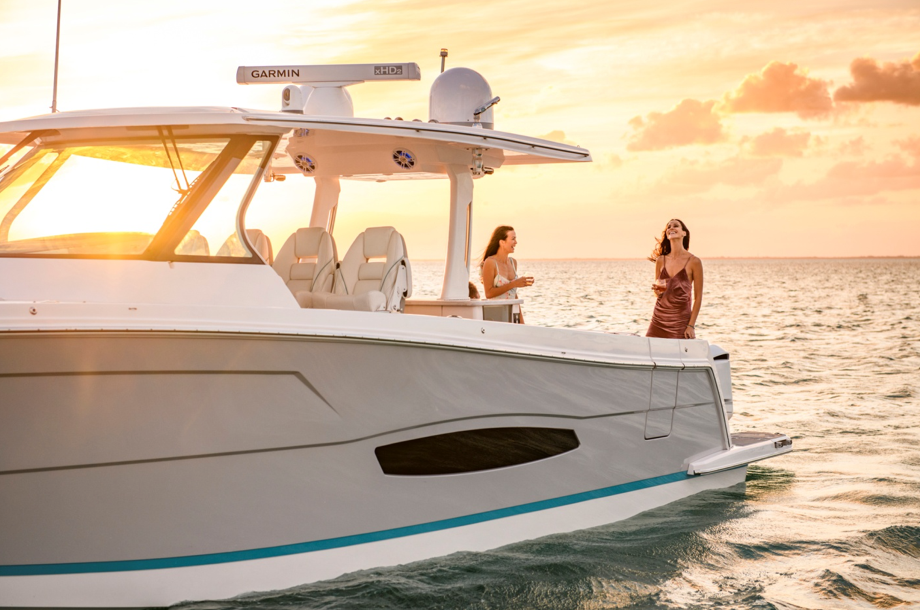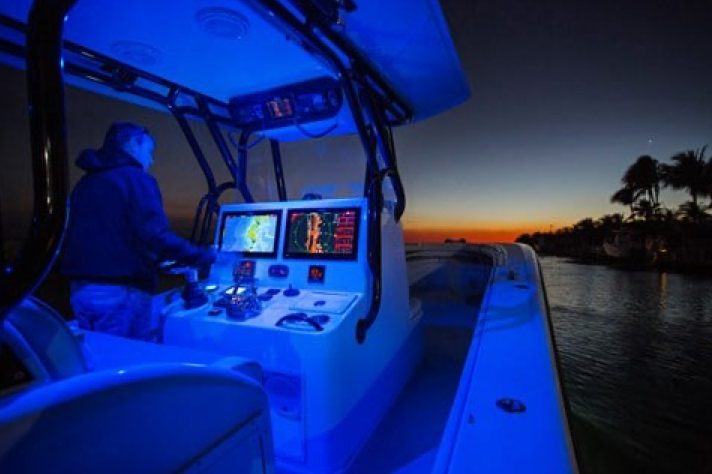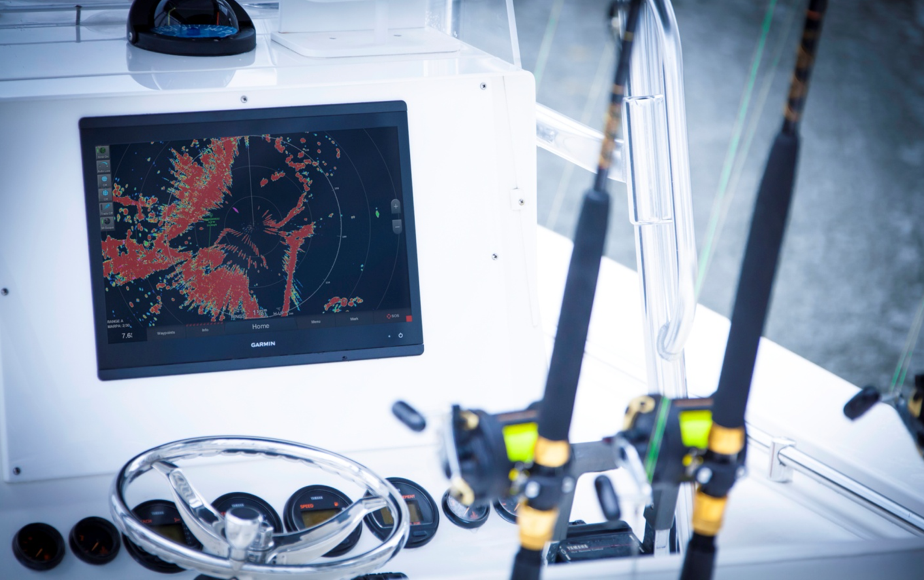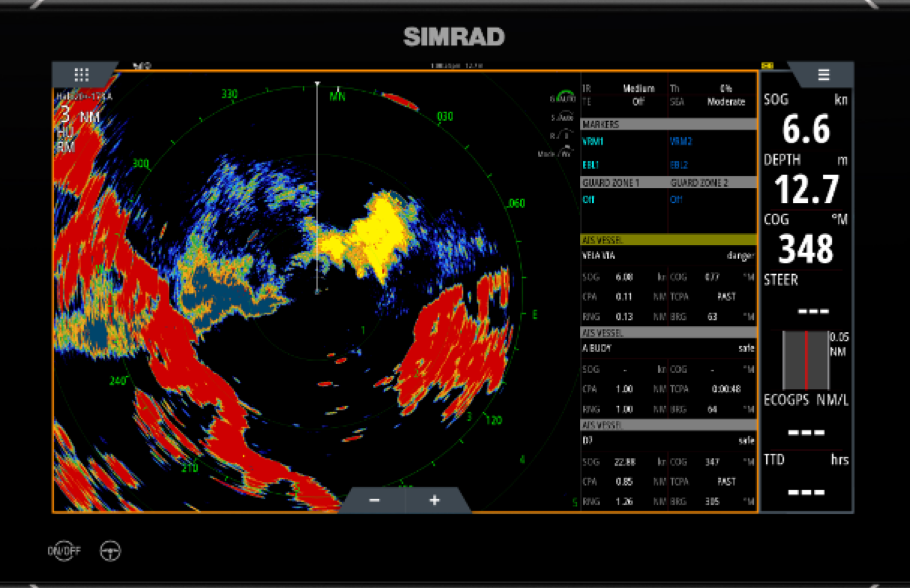Choosing Marine Radar for Your Boat, Part 1

By Frank Sargeant
If you’ve been wondering if you should add a radar system to your boat this year, the answer is probably “yes.” And if you’re wondering if it might be time to upgrade your existing radar, that’s probably also an affirmative, especially if your present equipment is more than five years old.
There are six (maybe more) basic reasons to consider a new radar system this year.
- Radar sees when other nav systems — and your eyes — can’t.
- Radar warns of other boats on a collision course.
- Radar reveals approaching bad weather early.
- Radar is a great tool for locating birds schooling on bait — and the gamefish below.
- Radar can target and save distant waypoints without the boat ever approaching them, useful for marking reef-fishing spots as well as charting unmarked hazards.
- New radar systems have auto-tuning, making them very easy to operate
We could also add that many current radar systems are smaller, safer and use less energy than ever before. They’re also more user-friendly.
Radar Can “See” Where Other Systems Can’t

All the other great navigational tools available today, including pinpoint GPS linked to big-screen chart-plotters and AIS systems, go a long way toward keeping you safe afloat. But only radar can “see” where and when your eyes can’t, in night, fog and other low-visibility situations.
Don’t make the mistake of thinking that a chart plotter with your existing track home already charted makes for safe low-visibility operation. While the plotter and the track can keep you on course, the system has no capability to see a log drifting across the channel or another boat bearing down on you. Radar does.
Advance Collision Warning
Radar not only sees where you are, it sees moving targets coming at you — and can highlight them to catch your attention. Unlike AIS systems, radar doesn’t require the target to have a transponder turned on to see it.

Systems such as automatic radar plotting aids (ARPA) let you identify a target, monitor its course and speed in relation to your course and speed and identify the closest point of approach and the time it will take to get to that point — it lets you know far in advance where danger might exist.
Danger alarms can also be set to alert you if a moving boat penetrates a guard zone around your boat — useful for boats overtaking you, in particular, since few of us make use of rear-view mirrors afloat. With high-speed bass boats, bay boats and high-performance quad-outboard offshore rigs multiplying yearly, the more warning systems, the better.
Together, the capabilities are a huge step up in safety on the water, particularly for those who go beyond simple day-boating.
Bad Weather Alerts
While the NOAA Weather Radio & Live Alerts app can help when you’re within range of cell towers ashore, radar can paint any approaching storm no matter where you are. It can also highlight intense squalls that are headed your way, giving you time to change course and get out of the way, head for the harbor or batten down the hatches.
And you’re highly unlikely to miss that angry red mass on your MFD, compared to the tiny images that pop up on your smartphone when bad weather is on the way.

Locating Birds, Bait and Gamefish
Properly tuned radar can often locate flocks of sea birds swarming over bait driven to the surface by gamefish below. The systems can see well beyond the eyes of even the most seasoned anglers.
And because the antenna is typically mounted well above the water, the system can in effect paint birds that are “over the horizon” for those on deck.

Bait schooled on top inevitably means blackfin tuna, yellowfins, mahi, mackerel or other gamefish attacking from below. And sometimes, there might even be a blue marlin or some bluefins below it all, picking off the 20-lb. (9.07 kg) gamefish.
SIMRAD’s Halo system has a “Bird Mode” that makes it simple, as far as tuning — just hit the virtual button. It still takes a bit of ground-truthing, spotting birds on the screen and then spotting them ahead, to begin to be pretty sure if there’s a flock of birds or not, but modern systems make it much easier than in the past.
Targeting Distant Waypoints
Snitching the “numbers” of other anglers’ reef fishing spots is something of a pastime for many offshore skippers. Radar makes it easy to do when you see a boat on a hot bite for grouper, snapper or other bottom species, without even approaching that boat.
It’s possible to use the variable-range marker and electronic-bearing line features on your radar to determine the exact distance and direction to the boat. Then it’s easy to chart the coordinates of that spot for future reference. (Of course, other radar-equipped skippers can do the same to you, so what goes around comes around.)
You can also find the trolling fleet, even if they’re being secretive, with your radar. Some days the bite might be on the 300’ (91.44 m) line, some days at 1,000’ (304.8 m) but the other guys can’t hide from you when you have radar.
The same features also make radar useful for dropping a pin on unmarked navigational hazards, maybe a derelict boat that has gone aground near the channel, or a large log or other fixed obstruction. Next time out, you’ll know exactly where those hazards are and can avoid them easily.